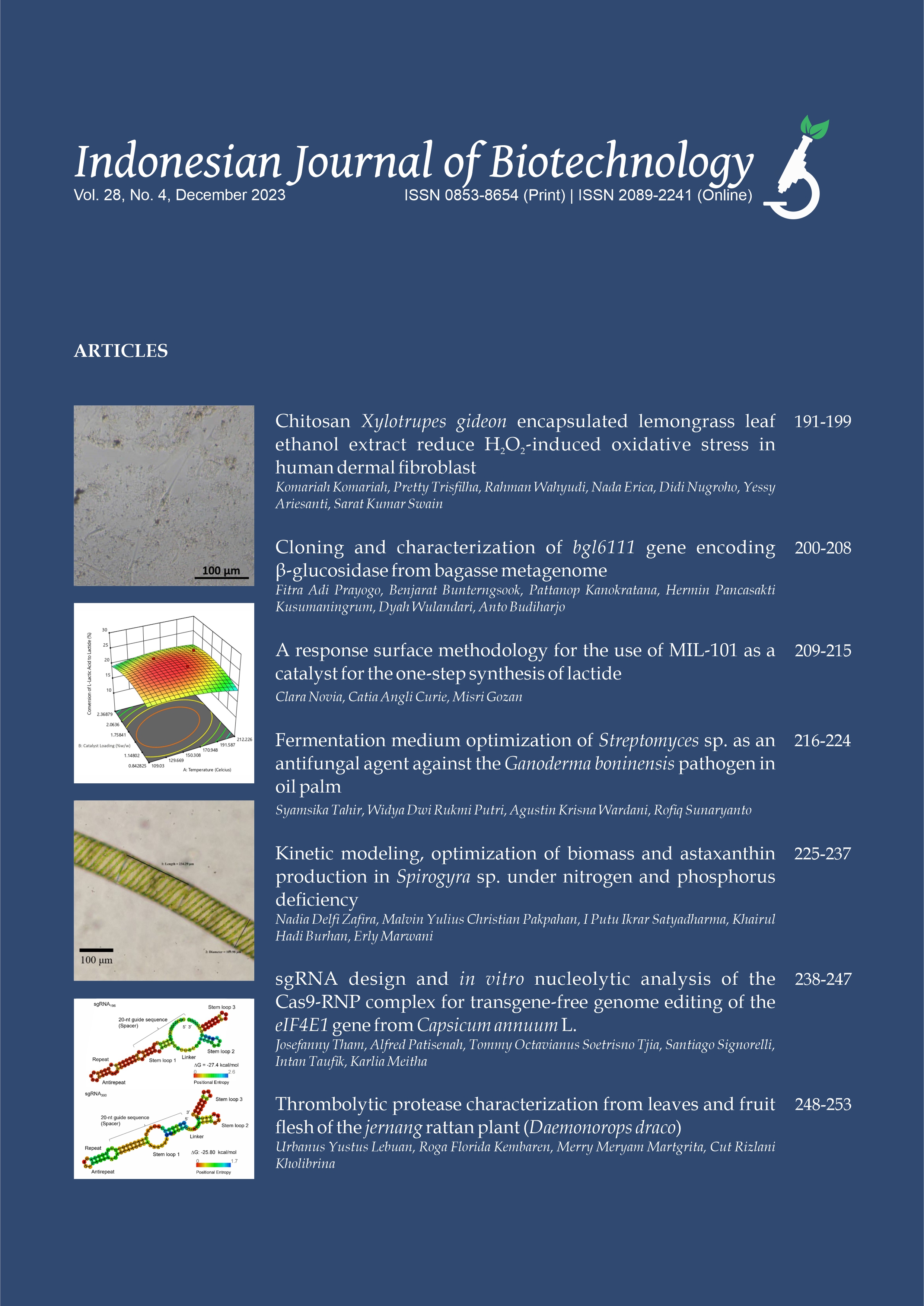The assessment of genetic variability and taxonomic affinity of local pummelo accessions from Yogyakarta, Indonesia based on RAPD
Ratna Susandarini(1*), Rina Arifati(2), Abdul Razaq Chasani(3), Siiti Subandiyah(4)
(1) Faculty of Biology, Universitas Gadjah Mada, Indonesia
(2) Faculty of Biology, Universitas Gadjah Mada, Indonesia
(3) Faculty of Biology, Universitas Gadjah Mada, Indonesia
(4) Faculty of Agriculture, Universitas Gadjah Mada, Indonesia
(*) Corresponding Author
Abstract
Pummelo (Citrus maxima) is one of three biotypes considered as true species within the genus Citrus.
A major issue of pummelo taxonomy in Indonesia is the high number of cultivars showing variability in
phenotypic characters but of unknown genetic diversity. In this study, the assessment of genetic variability
and taxonomic affi nity of local accessions of C. maxima from Yogyakarta was examined based on RAPD
fi ngerprinting. The availability of universal primers and technical simplicity makes RAPD as a molecular tool
of choice for the assessment of genetic variability at various taxonomic levels. In this study, 13 accessions of C.
maxima collected from Yogyakarta were observed for their genetic variability. An additional three registered
cultivars were included for comparative purpose. Two decamer primers used for the amplifi cation of DNA
produced 222 bands with 174 of them were polymorphic. The data was subjected to cluster analysis to observe
the grouping of accessions and taxonomic affi nity. Results indicated high genetic variability among accessions.
The dendrogram constructed using UPGMA method based on simple matching coeffi cient showed two
main clusters were which was in line to morphological characters. The grouping of accessions showed clear
differentiation between accessions bearing white and those with reddish fruit fl esh, and thus demonstrates
taxonomic value of this study in recognizing important agronomic character for this tropical fruit crop.
A major issue of pummelo taxonomy in Indonesia is the high number of cultivars showing variability in
phenotypic characters but of unknown genetic diversity. In this study, the assessment of genetic variability
and taxonomic affi nity of local accessions of C. maxima from Yogyakarta was examined based on RAPD
fi ngerprinting. The availability of universal primers and technical simplicity makes RAPD as a molecular tool
of choice for the assessment of genetic variability at various taxonomic levels. In this study, 13 accessions of C.
maxima collected from Yogyakarta were observed for their genetic variability. An additional three registered
cultivars were included for comparative purpose. Two decamer primers used for the amplifi cation of DNA
produced 222 bands with 174 of them were polymorphic. The data was subjected to cluster analysis to observe
the grouping of accessions and taxonomic affi nity. Results indicated high genetic variability among accessions.
The dendrogram constructed using UPGMA method based on simple matching coeffi cient showed two
main clusters were which was in line to morphological characters. The grouping of accessions showed clear
differentiation between accessions bearing white and those with reddish fruit fl esh, and thus demonstrates
taxonomic value of this study in recognizing important agronomic character for this tropical fruit crop.
Keywords
Citrus maxima, taxonomic affi nity, genetic variability, RAPD
Full Text:
PDFArticle Metrics
Refbacks
- There are currently no refbacks.
Copyright (c) 2016 Ratna Susandarini, Rina Arifati, Abdul Razaq Chasani, Siiti Subandiyah

This work is licensed under a Creative Commons Attribution-ShareAlike 4.0 International License.









